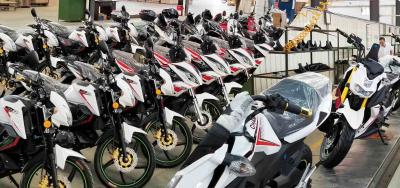Categories
Tags
-
#Off-Road Motorcycle
#China Off Road Motorcycle Manufacturer
#Off-Road Motorcycle Manufacturing
#Cub Motorcycle
#Electric Motorcycle Wholesale
#Street Motorcycling
#Enduro Motorcycle
#Electric Motorcycle
#Four-Stroke Engine Motorcycles
#Electric Off-Road Motorcycles
#dirt bike
#Chinese Motorcycle Brand
#Beginner Enduro Motorcycles
#Street Motorcycles
#adult electric off road motorcycle
#Women's Enduro Motorcycle
#Electric Motorcycles Wholesale
#Motorcycle
#Street Motorcycle Wholesale
#Motorcycle Long-Distance Travel Gear Checklist
#Buying Chinese Motorcycles
Archives
Who’s Buying Chinese Motorcycles? Top 10 Global Buyers Revealed
-
Who’s Buying Chinese Motorcycles? Top 10 Global Buyers Revealed — Latin America Becomes the New “Gold Mine”
In 2024, China’s motorcycle exports hit a historic high, with Mexico remaining the largest buyer, importing 2.1988 million units. The Latin American market accounted for nearly 40% of total exports. Thanks to their affordable prices, durability, and tropical adaptability, Chinese motorcycles are accelerating their global expansion. Meanwhile, electric models now make up over 33% of total exports — marking a clear shift from quantity to quality.
Record-Breaking Year for Chinese Motorcycle Exports
In 2024, China exported 14.4989 million complete motorcycles, a 27.01% year-on-year increase, reaching a total export value of USD 8.716 billion, setting a new record.
Behind this export surge lies one key question: Who are the main buyers driving China’s motorcycle boom?Mexico Leads the Pack
Unsurprisingly, Mexico tops the list once again.
According to customs data, Mexico imported 2.1988 million Chinese motorcycles in 2024, worth USD 1.172 billion.
As one of North America’s major economies, Mexico has strong demand for low-cost, durable commuter vehicles — perfectly matching China’s strengths in affordability and reliability.Philippines Follows Close Behind
The Philippines ranks third among global buyers.
Although the final 2024 figures have not been officially released, the China Chamber of Commerce for Motorcycle (CCCM) reported that in 2023, the Philippines imported 668,000 units, ranking just behind Mexico and ahead of Turkey.
Given current market trends, its 2024 imports are expected to remain at similar levels, keeping it among the top importers.Latin America: The Largest Growth Engine
Beyond Mexico and the Philippines, numerous countries across Latin America, Africa, and Asia continue to import large volumes of Chinese motorcycles.
Overall, Latin America remains the largest export destination, with 6.0357 million units shipped in 2024 — nearly 40% of China’s total exports.
Africa and Asia followed with 3.7461 million and 3.1907 million units respectively.
The common thread across these regions? Strong demand for small-displacement, affordable commuter bikes — an area where Chinese manufacturers excel in cost control and product adaptability.Affordable Yet Functional
The average export price of Chinese motorcycles in 2024 was just USD 601 per unit, indicating that most exports are still small-displacement and budget-friendly models.
This also explains why emerging markets in Latin America and Africa dominate demand — buyers prioritize reliability and affordability over luxury or performance.Why Chinese Motorcycles Succeed Globally
1. Cost Advantage
A mature domestic supply chain for components keeps production costs significantly lower than most international competitors.2. Product Adaptability
Chinese manufacturers design models tailored to tropical and subtropical climates, offering durability and easy maintenance on rough roads.3. Strong Distribution Channels
By leveraging localized dealerships and OEM partnerships, brands can quickly penetrate target markets and reduce entry barriers.Challenges Ahead
• Low Unit Price:
While export volume is high, overall export value and profit margins remain limited.• High-End Competition:
In large-displacement or premium markets — such as Europe and North America — Chinese motorcycles still struggle to compete with brands like Honda, Harley-Davidson, and BMW.The Rise of Electric Motorcycles
As global demand for low-carbon and lightweight transportation continues to grow, exports of electric motorcycles are soaring.
In 2024, China’s electric motorcycle exports exceeded 2.2 million units, accounting for 33% of total motorcycle exports.With continuous technological innovation and value-added product development, Chinese motorcycle manufacturers are poised to transition from quantity to quality, paving the way to enter higher-end global markets in the near future.
